Here at In Your Pocket, we’ve been known for our brutally honest takes on travel and tourism since our days as a plucky publishing startup back in Vilnius in the early 1990s. So we’ve got no qualms admitting the obvious and saying that last year really sucked for most people, especially those in the travel and tourism industry. And while things still suck pretty much just the same right now in the early days of 2021, we’re both sincerely optimistic and excited for what the rest of the year will bring. And what better way to share our optimism than with a somewhat cliché article highlighting various off the beaten path destinations around Europe, any and all of which would make fabulous destinations for those looking to avoid the crowds and discover some exceptionally cool corners of this fabulous continent!
Leeds, England
“There’s nowhere quite like God’s Own Country, and Leeds can lay claim to being the unofficial capital of England’s finest region. It also happens to be home to some of the best restaurants in the north and England’s best pub-slash-music venue (The Brudenell Social Club, for the record).”
John Bills, In Your Pocket Senior Editor
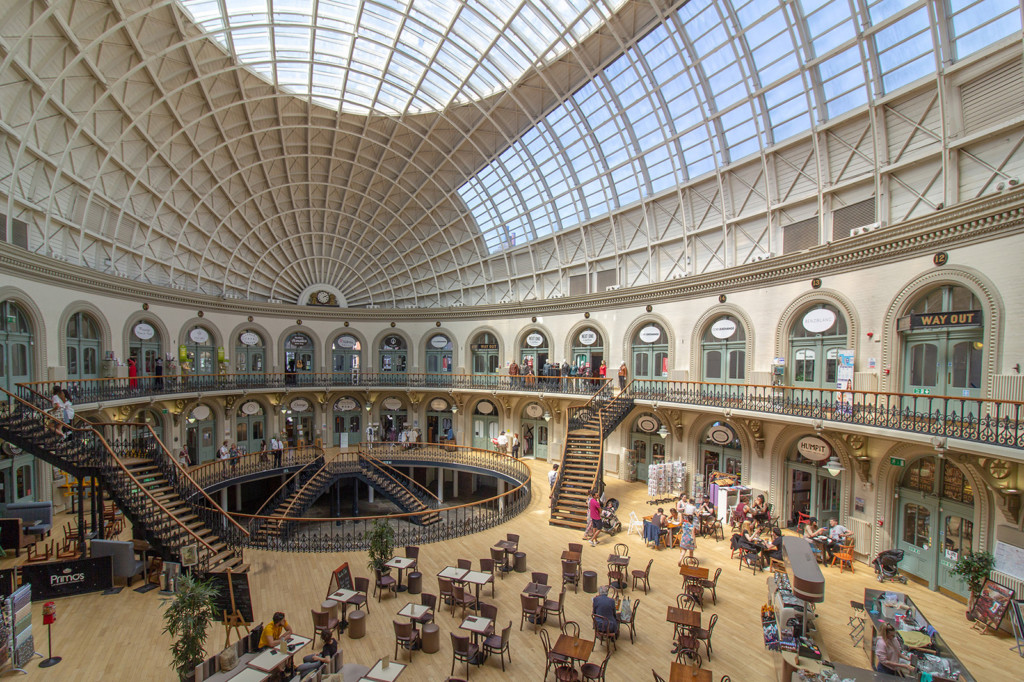
There’s no place quite like Yorkshire. God’s Own Country does things a little differently to the rest of England, and its biggest city is right at the heart of it all. Leeds is pride and Leeds is confidence, the friendliest city in the north and one that isn’t afraid to thrust itself to the fore, a town that deeply understands its importance and influence. It also happens to be sublimely beautiful, culinarily creative and home to some of the best bands in the country. Other cities get the ‘musical capital’ tag but Leeds trumps them all — it just doesn’t make a song and dance about it.
Yorkshire has a reputation for being about as homely as it gets and that reputation isn’t built on hearsay. We predict that you’ll go about four minutes in the centre of town before finding yourself drinking a cup of tea and listening to an adorable old couple make impressively-witty remarks about their relationship. Leeds is conversation central, a place that has time for a chat but isn’t going to waste your time in the process. It doesn’t get much friendlier than this.
But there is a regal side to it that is often forgotten. The city has a host of stunning estates that rival those of the south, while the fine dining scene might just be the most underrated in England. That juxtaposition sums Leeds up nicely — an old friend that will make you a cup of tea and cheer you up, while cooking you a seven course degustation meal in the process.
Tuzla, Bosnia

Tuzla might not get the attention afforded to Sarajevo and Mostar, but that’s just the way that Bosnia and Herzegovina’s third-largest city likes it. A city of poetry, painting and perseverance, Tuzla’s compact and charming centre shines as its brightest star, although it is debatable how accurate the word ‘compact’ can be when that centre comes with a massive salt lake, making this the only city in Europe with a salt lake at its core.
Salt has played the major role in the development of the city over the centuries so it makes sense that good old NaCl is at the forefront of modern Tuzla, through the gorgeous lakes and fantastic Museum of Salt, arguably BiH’s most underrated museum. Throw in the country’s most convivial atmosphere, some of its best pubs and a very famous ćevabdžinica, and you’ve got yourself a tremendous microcosm of everything that makes Bosnia and Herzegovina so bloomin’ magnificent.
Olomouc, Czechia
“I’d never heard of Olomouc until we got stuck there one December on account of my friend’s future ex-wife realising that she’d forgotten her passport a couple hours out of Prague on what should have been a weekend away in Krakow. After finding a hostel and having a few drinks at a dodgy bar set in a retired commercial jetliner, I don’t remember much of the evening other than wandering through various cobblestoned streets and squares powdered with fresh snow, but Olomouc will always have a special place in my heart”
Yuri Barron, In Your Pocket Editor-in-Chief

For those looking to escape the crowds of Prague, Olomouc, a roughly two hour train ride from the capital, should capture your heart. The pretty university town is small enough to be charming, yet interesting enough for at least a weekend. Located in Moravia, there’s a plethora of architecture and history.
Olomouc is the fifth largest city in the Czech Republic with a population of about 100,000. It is home to the country’s second oldest university (after Charles University in Prague) which means its culture scene is alive and there’s a variety of dining and entertainment options available.
If you have a couple extra days, explore the lovely Moravian countryside outside of Olomouc. The city is a great place to base yourself while discovering the beautiful towns and tasty Moravian wine in the eastern part of the county. Litomyšl and Kroměříž are two charming towns that will keep you busy for an entire day.
Aarhus, Denmark

You’re in for a treat. Aarhus might not get the attention that other Scandinavian cities do, but when has following the crowd ever been the way to go? Denmark’s second-largest city is waiting to steal your heart through its alluring array of museums, history, cultural centres and weird residential buildings that look like icebergs. Your new favourite city awaits.
But it isn’t all about the underrated, the under-appreciated and the overlooked. This is the second largest city in the country after all, and one that displays all the confidence you’d expect from such a spot. Important things have happened here, the past, present and future of the Danish nation has been influenced by the people and happenings of Aarhus. Underestimate this place at your peril.
The ARoS Art Museum is as good as any equivalent in Copenhagen, Stockholm or Oslo, while Den Gamle By might just trump all opposition when it comes to bringing history to life. Throw in some seriously productive cultural centres and a roster of museums that doff their respective caps in the direction of Denmark’s tough history and you’ve got a city that knows who it is and why you’re going to fall in love with it. And believe us, you will fall in love with Aarhus.
Turku, Finland
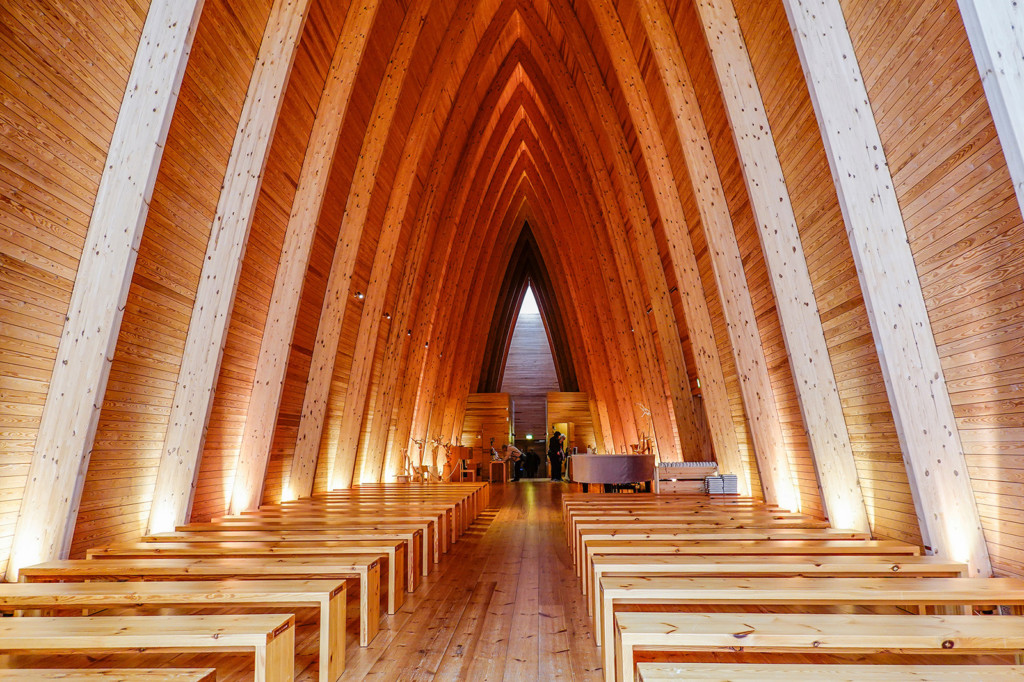
You can be forgiven for instantly thinking ‘Helsinki’ when Finland is brought up, but there is plenty more to this country than its capital city. The former capital, for example. Turku is arguably even more important than Helsinki in the grand scheme of things when it comes to Finland. This is where the country was born and where the country flourished, and if it wasn’t for a strange commitment to being on fire then it may well have been the capital today.
But we’re not going to cry over burned milk – we’re too busy enjoying the museums, galleries, architecture and sightseeing on offer here. This isn’t the largest city in the world, it isn’t even the largest city in Finland, but you’ll struggle to find a better collection of museums in such a small place. What’s more, a lot of these establishments are found just a stone’s throw from the Aura river, the waterway that runs through the city. Culture and riverbanks? Count us in.
You’ll also find two of the most important buildings in Finland right here in this gorgeous city. Turku Cathedral is the epicentre of religious life in the country, an iconic cathedral with spirit and beauty in spades, a house of worship that wasn’t spared by the fire but rose from the flames like, yes, like a phoenix. And Turku Castle? The most visited museum in Finland – that tells you all you need to know.
Bangor, Wales
“Small but perfectly formed, the North Wales university city is a great base for exploring the coast and nearby Snowdonia, but it packs a powerful punch itself. Take me back to that pier, already.”
John Bills, In Your Pocket Senior Editor

Bangor might be the oldest city in Wales and one of the smallest in the United Kingdom, but underestimate this place at your peril. This is a student town with gusto and spirit coming out of its ears (not literally), a thriving centre of education and all the energy that comes from thousands of young, excitable people in a new town.
The city is a great base for exploring the north of Wales and Snowdonia National Park, with an impressive array of hotels, restaurants, pubs and bars covering all you might need. Caernarfon is just down the road, home to one of the most famous castles in Wales and an impressively high percentage of Welsh speakers — when independence comes, the fire will start here.
Bangor’s population increases by 50% during term time but those with a phobia of the young should not be turned off, as the burgeoning academics add their own flavour to the whole shebang. Those afraid of a bit of grime should take heed though — ‘rough around the edges’ doesn’t really do this place justice. Bangor is beautiful and Bangor is intimidating, often at the same time. The pier is gorgeous but falling apart, the pubs are homely but defiant. Bangor is a city that takes some patience but rewards those who offer it.
All this without mentioning Llanfairpwllgwyngyllgogerychwyrndrobwllllantysiliogogogoch? The notoriously easy-to-pronounce is less than 10 minutes from Bangor by train. The temptation is strong, don’t deny it.
Cádiz, Spain
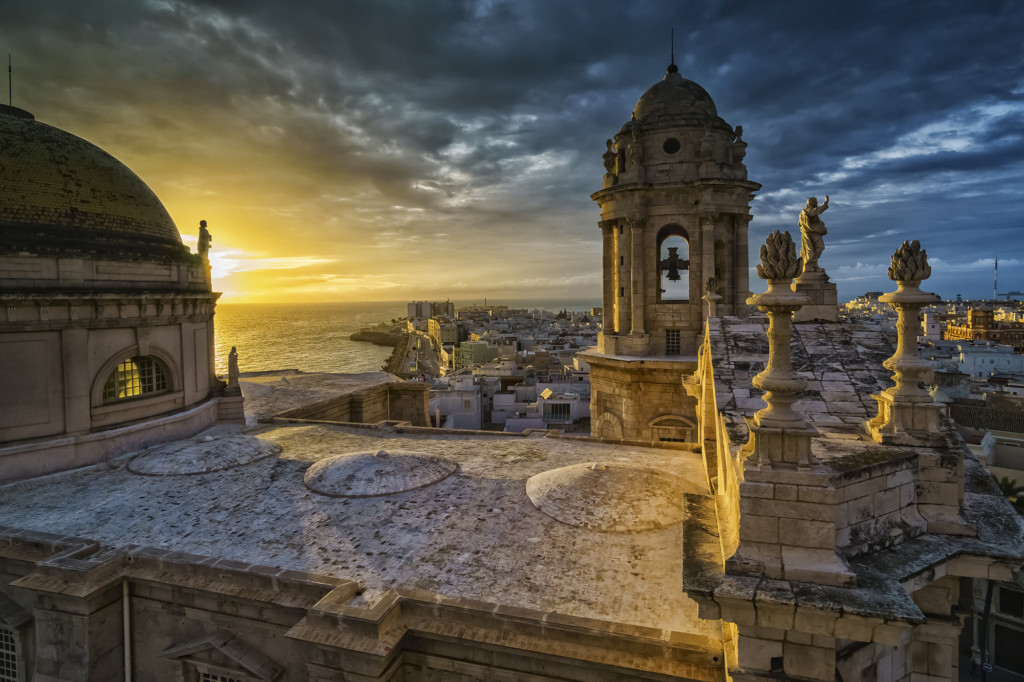
Cádiz might not be the biggest city in Andalusia, but this ancient wonderland certainly packs a significant punch. One of the oldest continuously inhabited cities in Western Europe, the city known to the Moors as Qādis, the Phoenicians as Agadir and the Greeks as tà Gádeira is a living treasure hunt of Europe’s most important centuries, a city where history is found around every corner, in every nook and cranny and everywhere in between.
Is that to say that Cádiz is all history history history? Far from it — this place has a youthful essence that simply cannot be faked. Its people are its greatest asset, vivacious and energetic in everything they do, whether that is filling up the tapas bars or going about their daily business in that most majestic of old towns. Saying that, there isn’t a huge amount of energy on the beach — it is the beach after all — but we all need to relax from time to time.
And Cádiz offers plenty of that. This little charmer on the Bay of Cádiz will engage and excite you with its restaurants, bars, clubs and unbeatable seafood joints, its proud history of flamenco and its festivals, not least its carnival, second only to Rio when it comes to extravagance. But the beaches are there when it all gets a bit too much, and there are few things we love more than an evening on La Caleta watching the sun go down, before heading to the Central Market for all manner of entertainment.
Debrecen, Hungary
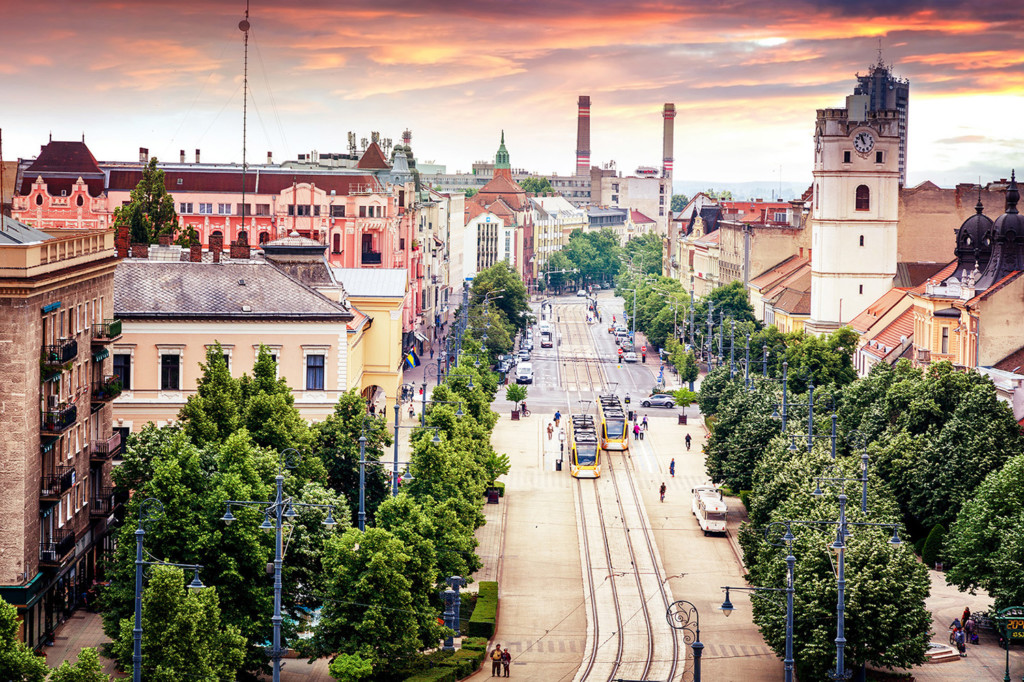
There are few cities like Debrecen. Hungary’s second largest city, Debrecen holds a special place in this most patriotic nation’s heart, as much for its tangible memories as its intangible ones. It was here that Hungary’s independence was declared back in 1848, and the city known as the Calvinist Rome has been the nation’s capital on a number of occasions.
That moniker comes from its religious history, being the centre of Protestantism in the area. The word ‘centre’ seems to be cropping up quite a lot, and the heart of Debrecen is delightful in many ways, from its elegant architecture to its vibrant cafes and collection of memorials and statues. The doorway to the Great Plain, Debrecen is the beating heart of Hungary, then, now, forever.
Explore more of Debrecen here!
Grenoble, France
“If you like mountains, if you like a community-centred environment, then Grenoble is made for you. Always some mountain activities, in winter, in summer, all year. Nothing is better than a beer near Tribunal Square (La place Saint-André).”
Dr Maxime Feraille, Nostalgic Former Grenoble Resident & In Your Pocket Contributor

The ‘Capital of the Alps’ isn’t your ordinary run of the mill nickname. The Alps might just be the most beloved mountain range in Europe, and being known as its cultural centre can go one of two ways — you can either become Paris, or you can become Canberra (no offence to Canberra). Which way does Grenoble swing?
The digital love that covers the pages of this website will give you a hint as our view. Grenoble is a stunner of a city with masses to offer, something that would be true with or without the famous mountains that surround it. The museums in this city are second to none, engaging and educational in equal measure without skimping on the details or the creativity. There is a feeling of ‘this is how it should be’ when exploring the museums of Grenoble.
It is the Bastille that tops the bill when it comes to sightseeing in Grenoble, and we’re not about to argue the fact. The hilltop fortress offers views that will force every single piece of poetry out of your body, vistas the likes of which one can travel for years without finding. You can take a thousand photos, but not a single shot will do justice to what your eyes will show you. Stendhal had the right idea.
Explore more of Grenoble here!
Kassel, Germany
“There are two cities in the world known for their overpopulation of raccoons: San Francisco and… Kassel. As both cities have strict laws of protection for those (sometimes) cute animals, it has become a similar plague in both. In fact, one of the nicknames of this town in North-Hessia is “Capital of the Raccoon”. What’s more, Kassel’s raccoon issues all started in 1934, when two couples from Northern California relocated to a nearby nature park…”
Anton “Waschbär” Gerhold, Kassel Native & In Your Pocket Contributor
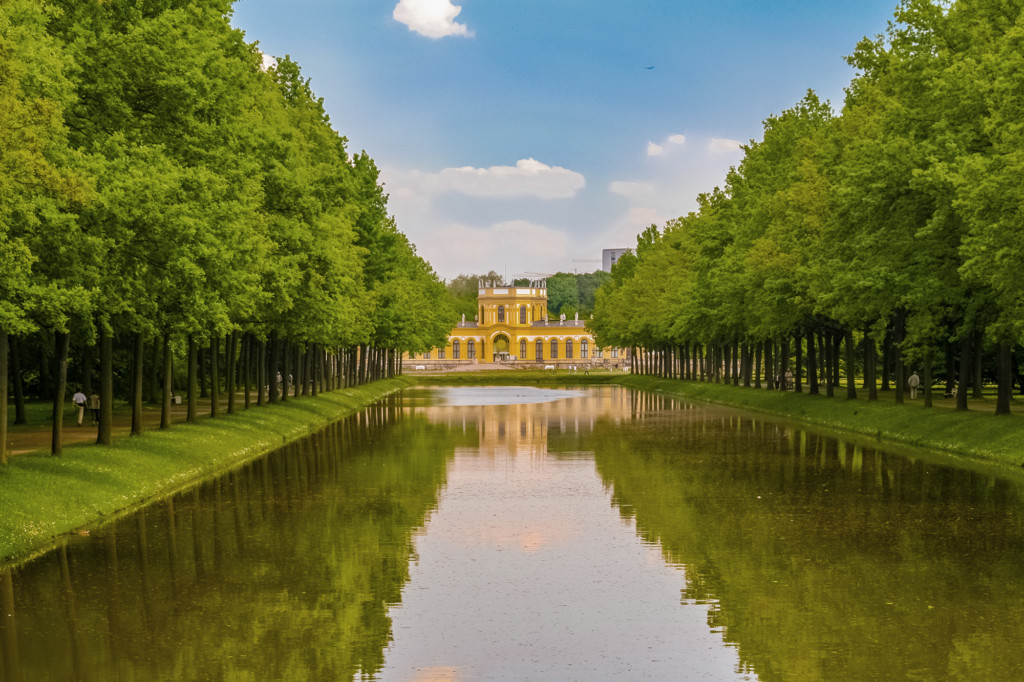
Located in the very heart of Germany, this famous old city is operating somewhat under the radar, a charming town that doesn’t get the attention of more famous contemporaries but is ready to steal the heart of any travellers who head this way. The most underrated city in Germany? Kassel could well be your new favourite destination.
The Herkules Monument has stood in its scenic position for over 300 years, and why would he move when such majesty is laid out in front of him? We’re talking about those marvellous water features of course, an exceptional cascade that runs from the feet of the monument to a ground level fountain. The monument and cascade are found in Bergpark Wilhelmshöhe, arguably Kassel’s crowning glory.
It can get forgotten in the face of Kassel’s modern charm but it is quite miraculous that there is a city to love at all. The town was obliterated by the Allies during World War II, and the Fulda Gap was considered the ‘hottest spot of the Cold War’. Kassel might now lie in the heart of Germany, but that position once made it a heart in peril.
Herceg Novi, Montenegro
“I LOVE Herceg Novi. If I’d been lucky enough to get in early on Bitcoins or the GameStop stock short squeeze, Herceg Novi would definitely be on my shortlist of random corners of the world I’d consider settling down in.”
Yuri Barron, In Your Pocket Editor-in-Chief

The city of Herceg Novi is to Montenegro what Montenegro was to Europe a decade ago: largely undiscovered, indescribably gorgeous, endearingly welcoming and practically impossible not to fall in love with on your first visit! While you might not know much about the place, or had even heard of it before now, it’s truly all the best of aspects of Montenegro in one convenient package.
Covering the far southwestern corner of the country, the larger Herceg Novi municipality stretches from the international borders with Croatia and Bosnia in the west and north to the clear, turquoise waters of Boka Bay, with the rocky mountains rising dramatically from the sea and culminating in the nearly 2000m peak of Mount Orjen. To the south of the sits the Luštica peninsula, whose rustic charm has been preserved amidst the recent development of tourism.
Back on the north shore, Herceg Novi town is the centre of the action, with the narrow lanes of its ancient old town meandering down the hill towards the water, while there are a dozen or so separate settlements running along the coastline, each offering a slightly different atmosphere for guests.
Explore more of Herceg Novi here!
Skopje, North Macedonia
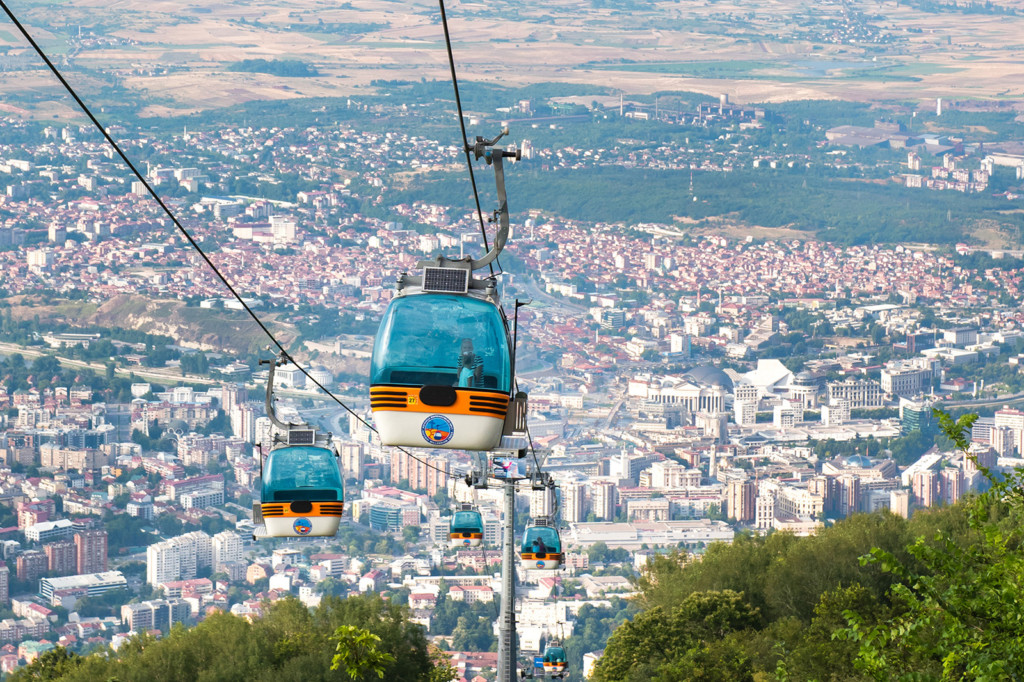
A city of immense contrasts and an almost audible clashing of cultures, Skopje’s rich and diverse history dates back at least six millennia. Despite a catastrophic earthquake that flattened huge swathes of the city as recently as 1963, Skopje retains much of its original charm despite the best efforts of the Japanese architect Kenzō Tange to asphyxiate the city with concrete during its reconstruction.
A city in which it’s almost impossible to find bad food and where you’ll discover a 12th-century church that literally (or rather figuratively) changed the course of Western art, Skopje’s now reachable from more locations than ever with the local airport handling not one but two of Europe’s leading low cost airlines.
Košice, Slovakia

There’s something special about this place. The second-largest city in Slovakia, Košice has a remarkable way of working its way into your heart and setting up shop, your new favourite city just waiting to be discovered. Maybe it is the sweeping nature of the city’s Gothic architecture, or the grandeur of the country’s biggest square, or maybe even the energy of Slovakia’s best nightlife. Almost all of the Central Europe cliches come true in Košice, a city that offers everything that inspired the establishment of In Your Pocket in the first place.
This is a 24-hour destination, a charmer that serves up great coffee in the morning and no small amount of beer at night, with some of the best restaurants in Slovakia waiting to help soak it all up. And soak it up you should, as this is a place for wandering, a city full of beautiful people surrounded by beauty of the architectural kind. And that’s just the main square, a huge boulevard featuring intimidatingly stunning churches, museums and galleries that are dripping with history, and some of the best beer in Slovakia.
Košice ticks all of the In Your Pocket boxes. A small town feel in a big city shell? Check. Architecture that positively sings to you? Double check. More great pubs, bars, restaurants and cafes than we’ll ever have time to visit? Check, check, check. Come to Kosice before everyone else does, and be sure to visit Halmi Place at least three times – you won’t regret it.
Gothenburg, Sweden
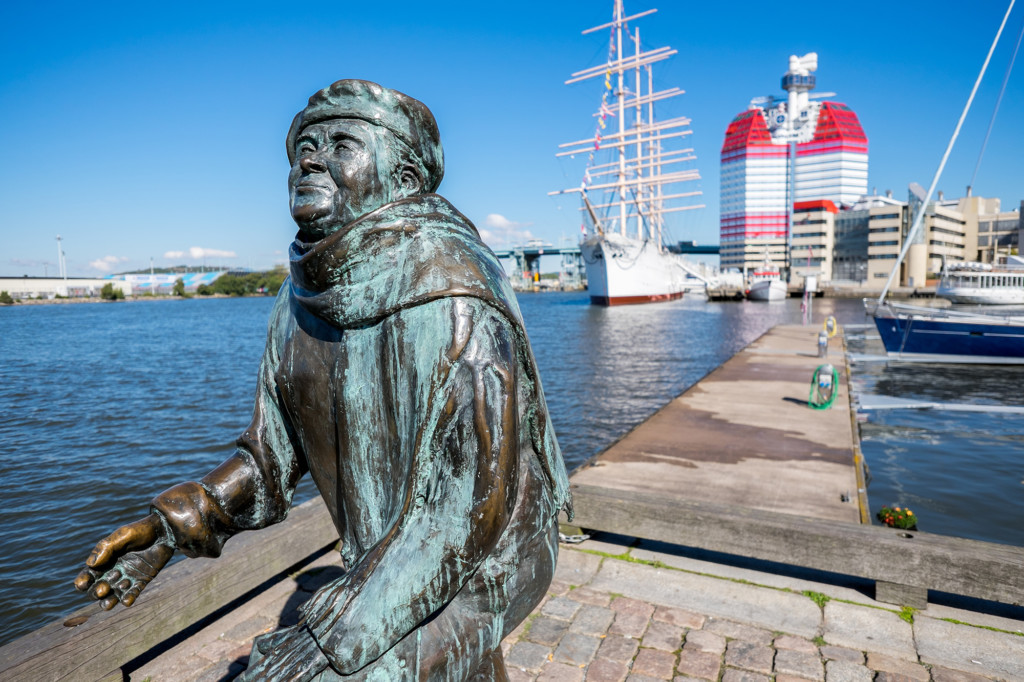
Sweden’s second largest city, and fifth largest in Scandinavia, Gothenburg, is a really fun city to visit, with a plethora of different sights, for visitors of all ages. Located on the west coast, it is a popular destination and attracts people from all over the world.
The capital of Västra Götaland County was founded in 1621, when King Gustavus Adolphus (Gustaf II Adolf) granted it the royal charter. At the beginning, Gothenburg was a Dutch trading colony, but with the charter, the King also had a number of his German and Scottish allies populate the city. Due to the mix of German, Scottish and Dutch people, the city was greatly influenced by all of them. The architecture resembles that of the Dutch cities, and Gothenburg was actually Dutch until 1652, when the Swedes took over. Throughout history the city was an important harbor, and to this day remains the biggest port in Scandinavia.
From top-notch seafood, that one just can’t get enough of, to neoclassical architecture and vibrant nightlife, any trip to Gothenburg is a trip to remember. If you visit during the summer months, or are really brave during the rest of the year, you can go island-hopping Gothenburg’s archipelago for a swim and, if you’re lucky, some sun. The islands are very popular for kayaking destinations, especially for its unspoiled nature and villages it features on the coast.
Explore more of Gothenburg here
Burgas, Bulgaria
“Burgas is definitely ‘our’ favourite city on the Black Sea – all too often passed up on by those heading to nearby Sunny Beach and other resorts. Come to think of it – that’s probably a good thing and part of what gives the city a very relaxed, laid back vibe. The excellent infrastructure makes for easy access by land, air or sea and at the same time gives the visitor access to a variety of activities ranging from ancient mineral baths, bird sanctuaries to kite surfing and so much more.”
Paromita Sanatani, Director of Bulgaria In Your Pocket
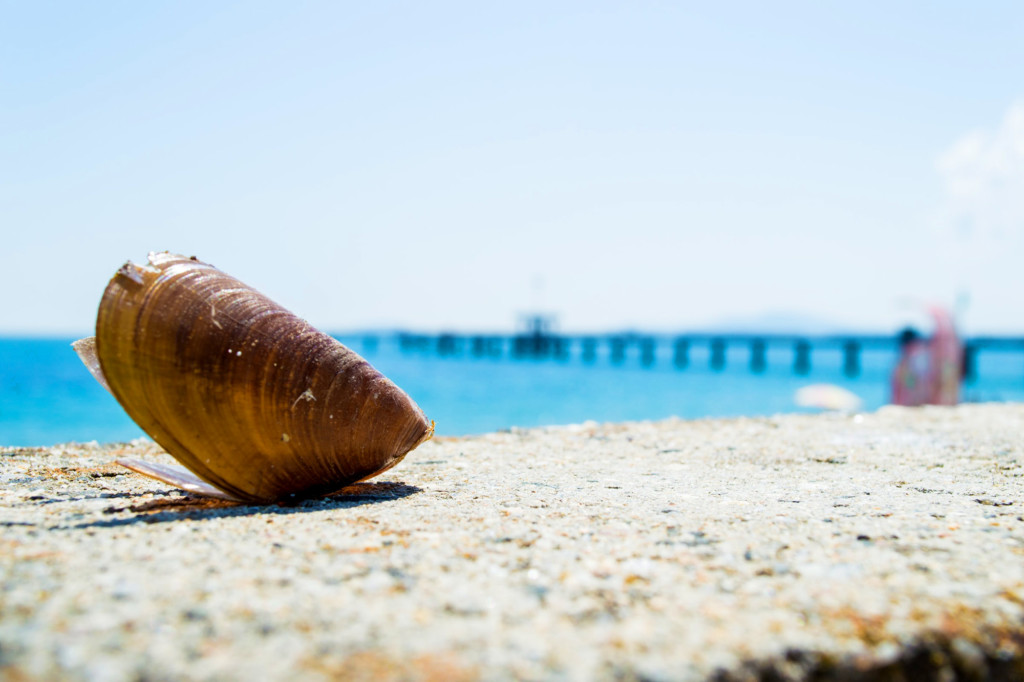
Burgas continues to top the list as the best place to live in Bulgaria. After spending just a few hours strolling along the magnificent Sea Gardens, relaxing on the Central Beach and browsing the shops along the generously pedestrianised city centre, then settling down to a lovely fresh fish dinner at one of the many outdoor restaurants, it is easy to see why. Getting the pronunciation of the city’s name right is slightly trickier – we will not even attempt to give references to ‘burgers’ and such – but suggest you ask one of the many friendly locals to help you out!
Burgas is the fourth largest city in Bulgaria, and the second largest on the Black Sea coast after Varna. Its permanent population is around 205,000. Burgas operates the largest commercial port in the country and the nearby Lukoil refinery is the largest in south-east Europe. Fortunately local industry does not detract from the natural beauty surrounding the city. The Burgas Lakes form the so called ‘wetlands’ region and, as a major point on the migratory route for birds from Europe, have been declared a protected area, offering opportunities for bird watching and other forms of ecotourism.
Whilst in Burgas itself the number of historical or architectural monuments to visit is limited, the surrounding area boasts some fascinating archaeological finds, made in recent years, that give visitors an insight into the civilisations that have dwelled on these lands over the millennia.
Zadar, Croatia
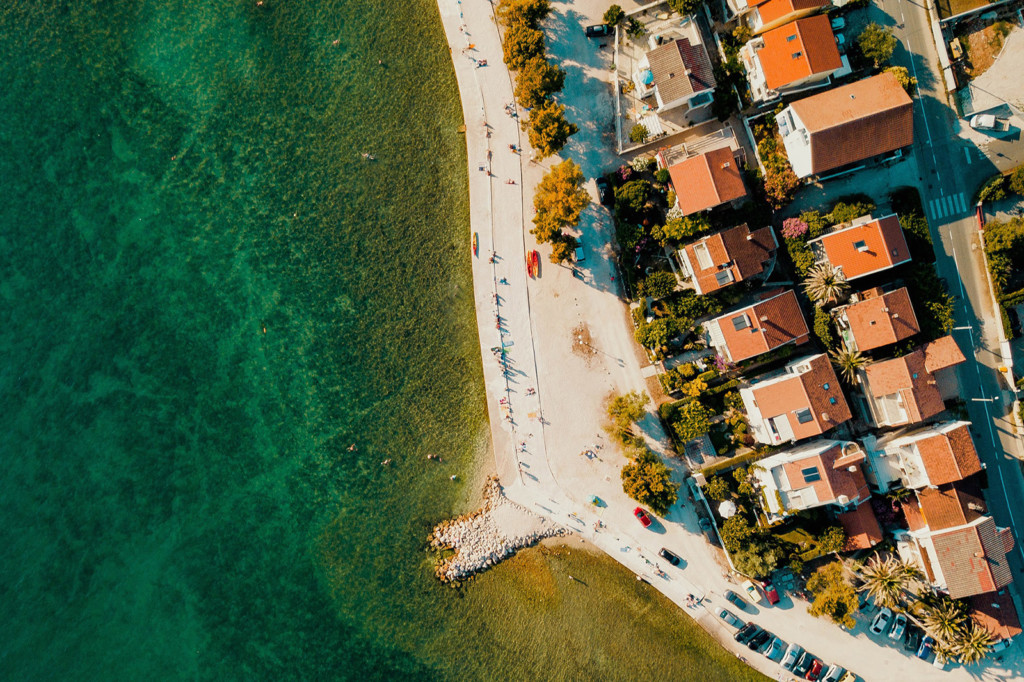
Zadar has a subtly different look to those of its Dalmatian neighbours. Although it is more ancient than Split, and just as rich in medieval heritage as Šibenik, central Zadar represents a far more complex meeting of old and new, with Roman-era fragments and Romanesque churches rubbing shoulders with blocks of flats, sleek cafés, and ultra-contemporary architectural installations such as the Sea Organ and the Greeting to the Sun.
The reasons for this architectural mix-up rests largely on the fact that Zadar was subjected to serious bombing raids by the allies in World War II, leaving the huge kind of holes in the urban fabric of the Old Town that had to be filled by post-war planners.
Of all Croatia’s Adriatic cities, Zadar was the one that suffered most in terms of destruction and depopulation during the war, and the generations that rebuilt the city in the Fifties and Sixties were genuine urban pioneers. Maybe it’s because of Zadar’s post-war experience of being a city on the architectural frontier that makes it such a forward-looking and innovative place today.
Trieste, Italy
“This Italian enclave on the Adriatic does have an imperial feel, even though the city of Trieste was shaped by different cultures who saw its potential. The nearby hills offer plenty of breathtaking panoramas including a peek at the neighbouring countries, but if you prefer, let’s meet for a lazy aperitivo with a glass of Prosecco and baccalà.”
Prof Florence Ménard, SpongeBob SquarePants Aficionado & In Your Pocket Contributor
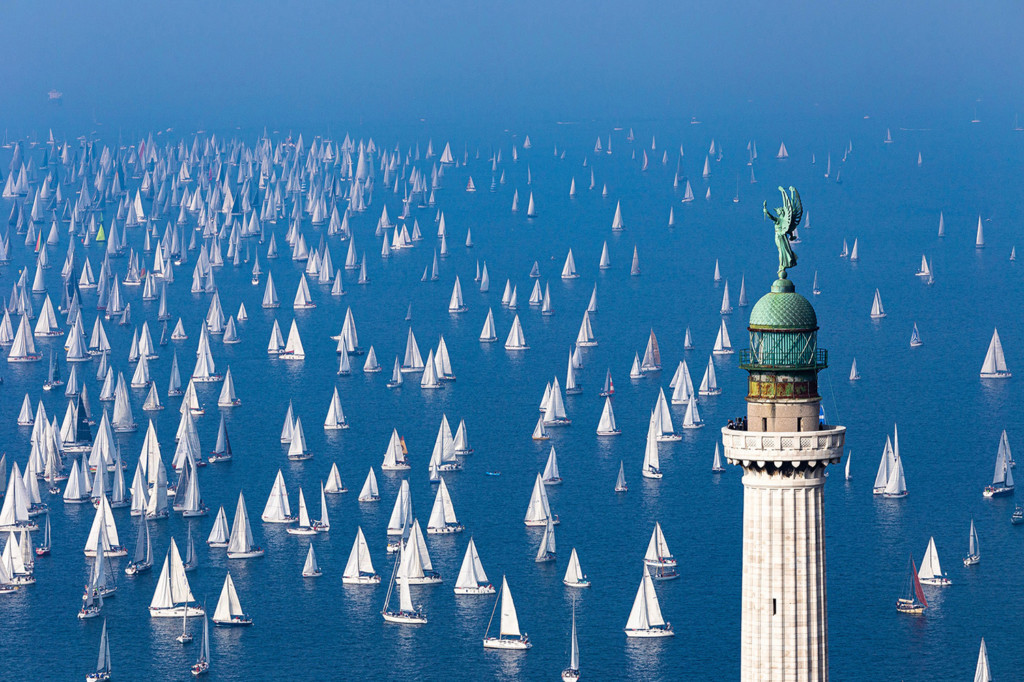
Situated in a unique and somewhat historically precarious position between Latin, Germanic and Slavic lands, Trieste is unlike any other city in the world, and is truly one of the most underrated and unfairly overlooked places not only in Italy, but in all of Europe. While Rome, Florence and nearby Venice have been fixtures on the proverbial tourist map for centuries, in terms of cuisine, culture, castles and romance Trieste is second to none. Embraced by green hills on one side and the Mediterranean Sea on the other, with the snow-capped Dolomites piercing the horizon to the north, no city can honestly claim to have a more majestic setting.
After having served as the most important port and fourth largest city of the Habsburg Empire for some seven centuries, Trieste became part of Italy following World War I, spent nearly a decade as an independent city state (the so-called Free Territory of Trieste) following World War II, and is now the capital and largest city of the Friuli Venezia Giulia autonomous region. The influence of Trieste’s Austro-Hungarian heritage is readily apparent nearly a hundred years after the downfall of the Habsburg monarchy, from the grand architecture lining the main squares and boulevards to the buzz of the historic Viennese-style coffee houses scattered across the city to the hearty central European cuisine and frothy Bavarian beer found in countless pubs.
Bydgoszcz, Poland

Although it looks like a crossword cipher gone wrong, there is some linguistic logic behind the hard syllables of this northern city’s name: ‘Bydgoszcz‘ comes from a combination of the Old Slavic words for ‘to be’ (or ‘to become,’ sort of) and ‘guest.’ As such the city’s name is an extension of its atmosphere, and a warm invitation to enjoy some Polish hospitality. Pronounced ‘Bid-goshch’ (go on, you’ve got it), this Pomeranian town on the Brda River may not be a common site on European travel itineraries, but is one of Poland’s best kept secrets, thanks to postcard perfect views, a wonderful museum island, quaint waterfront, charming footbridges, old granaries, and even its own brand of Art Nouveau architecture.
Scratch below the scenic surface, and you’ll also discover dark tales of WWII horror, materialised in the gloomy Valley of Death and an absolute must-see: the Exploseum, a former Nazi explosives factory hidden away in the Bydgoszcz Forest. For rest, relaxation and family fun, there’s the Myślęcinek Forest Park just 5km from the centre, which boasts numerous attractions for all seasons, from the city Zoo to a winter ski slope (yes, even in this very flat part of the country). Whatever your interests, use this guide to get the most out of your visit, and we hope you fall in love with this city as much as we have.
Explore more of Bydgoszcz here
Cluj-Napoca, Romania
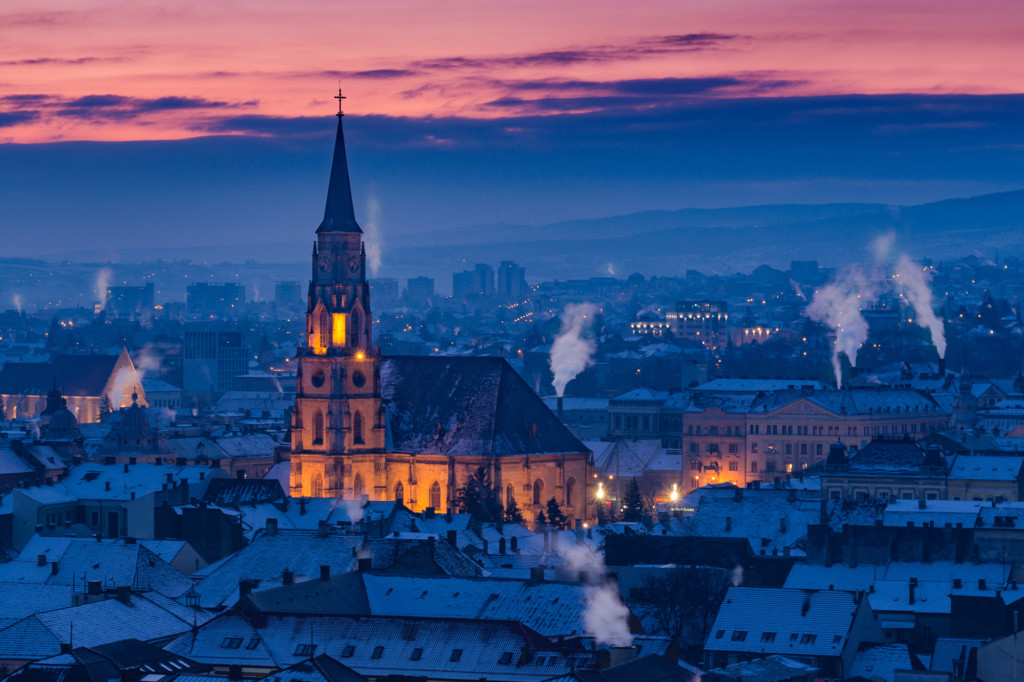
The largest city in Transylvania (and the second-largest in Romania), Cluj-Napoca (usually just Cluj in the vernacular) is uniquely situated equidistant between Budapest and Bucharest. Both Hungarian and Romanian influences abound, and the city is home to the country’s second-largest Hungarian community.
A major university city, Cluj has in recent years become well known for both its highly-skilled workforce (a number of major tech companies are based in and around the city) and storming nightlife and cultural scene.
Where once major bands only played the capital when visiting Romania, now many stop in Cluj too: some swerve Bucharest altogether and simply head for Cluj. The already legendary Untold Festival, held in the city every August, has quickly become one of the biggest and most popular music festivals in Europe since starting in 2014.
Piran, Slovenia
“Metre for metre this petite Venetian port can hold its own against anyone, including the imperial capital just over the horizon that was responsible for much of its fortune through the salt trade. In fact, it’s commonly said that the town was built on salt. Piran does have the same kind of open-air museum feel to it as Venice, only on a much much smaller scale (and without the €6 espressos, stagnant lagoon smell, periodic flooding and constant worry of sinking into the sea).”
Yuri Barron, In Your Pocket Editor-in-Chief
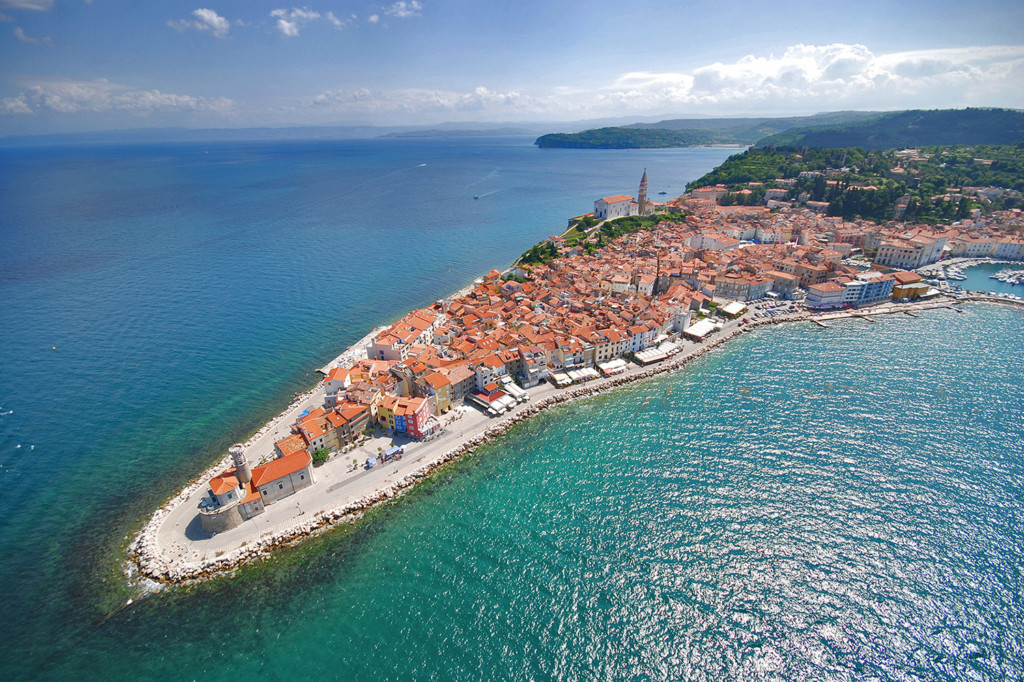
Piran is to the Adriatic what Bled is to the Alps and Slovenia as a whole is to Central Europe: tiny, friendly and overwhelmingly picturesque. It’s a town that is almost impossible not to fall in love with on your first visit, and if you only have time for a day trip you’ll likely want to make plans to return. We also only half-jokingly added “family residence in Piran – preferably renovated” to our list of things we now look for in potential significant others, but that’s only because we’re superficial.
Despite it’s modest size Piran is awash in superlatives. It boasts what is undeniably the country’s finest square, the 19th-century Tartinijev Trg named after the composer Giuseppe Tartini, and what has to be one of the most dramatically situated churches anywhere in Europe, St George Cathedral and its spectacular bell tower perched on the hill overlooking the town and the sea. In addition, its numerous restaurants not only turn out some of the best seafood we’ve ever eaten but also serve it in some equally unforgettable settings.
Veliky Novgorod, Russia

Veliky, or Great, Novgorod is generally touted as ‘the birthplace of Russia’. The first references to Novgorod go back to 859 and although scientists still debate the exact date of the city’s birth, this year is generally considered as the date when Novgorod, which was soon to become a key European political and cultural centre, was founded.
Situated on the cross roads of important trading routes passing from the Mediterranean to the Baltics and into the eastern Russian Volga regions, the town prospered in the middle ages and local craftsmen became famous for their skills in wood work and ironwork. In fact in the beginning the whole town, including the roads, was made out of wood, although unsurprisingly it burnt down more than once – people in wooden houses really shouldn’t be smelting iron…
As well as being the first Russian settlement to have toilets (long drop ones) Novgorod also claims to have had Russia’s first school (started in 1034 by the appropriately named Yaroslav the Wise) and the city’s history museum holds Russia’s oldest icon. It was also the first region to throw off notions of the Divine Right of Kings. For more than 300 years Novgorod was ruled by a ‘Veche’, a people’s assembly which made decisions on war and peace, laws etc and summoned or alternatively banned local princes to rule the region for a pre-arranged period of time.
Explore more of Veliky Novgorod here
Bonus Non-European Destination:
Johannesburg, South Africa

A little over 100 years old, Johannesburg or Joburg (as it is known by locals) still retains its gold rush roots, attracting people from across Africa and the world to its streets. A wise local summed it up neatly: ‘If cities had profiles on a dating website, Joburg would be the one with a really great personality. That’s opposed to Cape Town – the gorgeous blonde in the bikini.’
The contrasts are everywhere: of shiny shopping malls and roadside craft; designer-label junkies and fast-talking car guards; old money and the flashy, minted-yesterday kind; hipsters and hustlers. One minute it’s all shiny elegance and, the next, rough grittiness.
Joburg can give you the warmest smile or flip you the bird. The sunsets and summer thundershowers will take your breath away as quickly as the recklessness of its minibus taxi-drivers. From a twisty, segregated history has emerged an African cosmopolitan centre, a young city obsessed with the new, offering surprises for locals and out-of-towners alike.
Got any of your own tips about awesome lesser known destinations in Europe? You could leave a comment below, but since it might get lost amongst all the Cialis spam (seriously, you wouldn’t believe how much Cialis spam WordPress lets through its filter), feel free to email us or, even better, share this article on Facebook and tag us!



Great o see the Balkans featured! As one of the few destinations in Europe without travel restrictions they enjoyed a little bit of travel in 2020. Among them Albania is less crowded than the majority of destinations on the list. The country has no entry restrictions and is already green listed as a safe destination by a number of EU countries. The capital city Tirana has become an attractive destinations and so are the open air UNESCO sights of Berat, Gjirokaster and Butrint but also grant outdoors from the Albanian Alps to the Albanian Riviera.
I love hunting out the hidden gems of Europe, the places still waiting for the crowds to descend and those destinations that unexpectedly capture your heart.